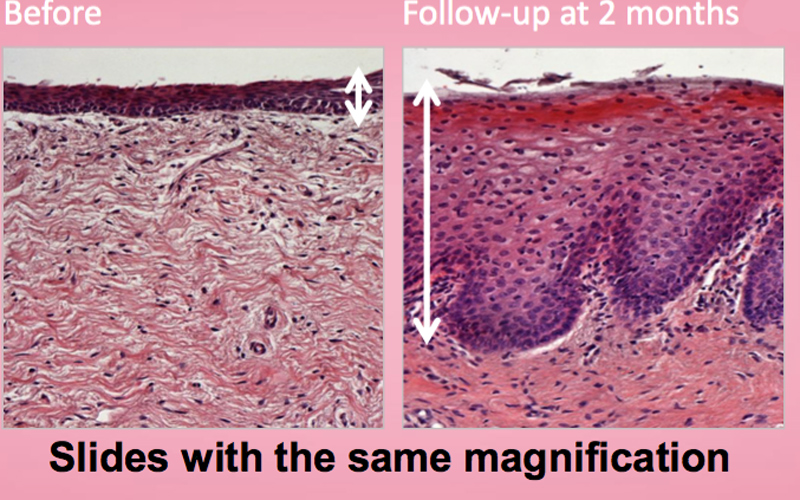Doctors have coined a new term to describe the aggravating symptoms that affect the genitals, urinary system and sexual function around the time of menopause. This collection of problems, which is caused by a decrease in oestrogen, is now referred to as Genitourinary Syndrome of Menopause (GSM).
New term for vaginal dryness
This new term replaces that of vulvovaginal atrophy (VVA) (or atrophic vaginitis) which was what doctors used to call vaginal dryness. According to Miss Tania Adib, Consultant Gynaecologist, the terms VVA and atrophic vaginitis, or vaginal atrophy never told the whole story of how the genital area is affected during the time of menopause, as it only referenced the symptom of dryness.
Speaking to GPs at a Continuing Professional Development event covering ‘Office Gynaecology’ at Twenty-five Harley Street, Miss Adib commented: “The term ‘atrophy’ was also deemed stigmatising – it made women even less likely to speak up about these symptoms and seek help and treatment.”
Miss Adib has welcomed the decision made by The International Society for the Study of Women’s Sexual Health and the North American Menopause Society to reclassify the collection of vaginal and urinary related symptoms under a new umbrella title, Genitourinary Syndrome of Menopause (GSM).
What are the symptoms of Genitourinary Syndrome of Menopause (GSM)?
- Dryness
- Burning, and irritation
- Lack of lubrication during sex
- Discomfort or pain during intercourse
- Urgency when it comes to needing to urinate
- Dysuria (painful urination)
- Recurrent urinary tract infections
How can GSM be treated?
There are a number of ways GSM can be treated. In terms of vaginal dryness, a vaginal moisturiser can help, alongside a water-based lubricant to be used when having sex.
HRT containing oestrogen may help symptoms of GSM. However, not all women can take HRT and many are wary because of the small but elevated risk of breast cancer associated with taking hormones. Another option is use topical oestrogen. This can be applied straight to the vaginal area, which although not ideal, has the advantage of being effective at lower doses. Anyone wary of oestrogen may prefer this as smaller amount reaches your bloodstream and it can be more effective than oral hormonal regimens at getting to the place that needs it.
New treatment for Genitourinary Syndrome of Menopause (GSM)
Miss Adib presented one of the newest treatments available to treat Genitourinary Syndrome of Menopause. “The MonaLisa Touch has proved to be a promising alternative treatment for GSM,” she said. “Treatments are quick, less than 5 minutes and patients report they are mostly painful, with at most, minimal discomfort. A major treatment effect can be seen after a single treatment.
Miss Adib added: “There is good evidence that the MonaLisa Touch laser treatment is safe and effective. It has a high satisfaction rate, with many women reporting that their symptoms improve. In fact, research has shown that in terms of women who have had the MonaLisa Touch Laser Treatment the percentage of women who are sexually active leaps for 74% to 96%. In other words, many women who were unable to enjoy sex because of GSM , are enabled to do after.
How does the MonaLisa Touch Laser work?
The MonaLisa Touch works within minutes. Most women do not experience side effects. When there are they don’t last long. The laser works on the tissue of the vaginal mucosa, boosting collagen and the resulting function. You can see the results the laser has on the tissue below.

As well as enabling women to enjoy sex again, the MonaLisa Touch Laser Treatment has also be shown to lessen mild urinary incontinence, help vaginal laxity and improve postnatal disorders which have been caused by childbirth injury.
Anyone who wishes to avoid using oestrogen creams can benefit from the MonaLisa Touch Laser Treatment, but for women who have suffered breast or gynaecological cancers, this method of treating Genitourinary Syndrome of Menopause (GSM) and cannot risk using oestrogen treatments, this is something of a game-changer.
The time of a woman’s life when her ovaries stop releasing an egg (ovum) on a monthly cycle, and her periods cease
Full medical glossary









